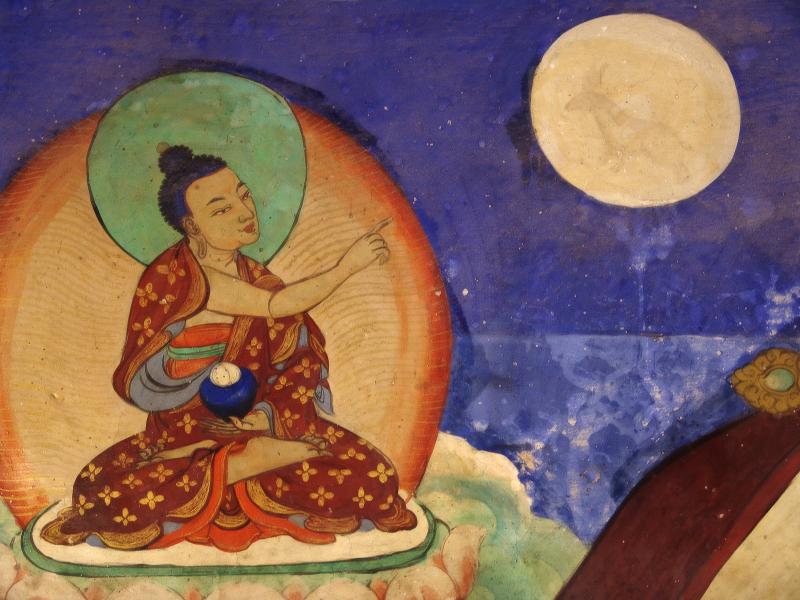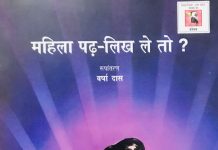BOOK REVIEW
Khadija Mastur’s Urdu novel ‘ The Women’s Courtyard’ offers a glimpse into the complex world of femininity, tradition and politics in the backdrop of the Partition.
Mrinalini De is an Anthropologist based in Kolkata.

[dropcap]W[/dropcap]e come across stories, memoirs, novels and historical accounts about India’s partition and they all remind us of how ordinary people suffered, experienced unprecedented trauma and hardship and how life turned completely upside down during those times. These literary and historical retellings of partition illuminate our vision and empower us to see how the loss of loved ones, the compulsion to leave behind one’s ancestral roots and relocate, the trauma of witnessing rampant rape and murder and the fear of losing one’s life in a fragile moment are common to people from all religions, ethnicities and geographical locations- no matter how far they are from each other. They suggest that Hindus and Muslims, men and women, Hindi speakers and Urdu speakers, Indians and Paksitanis were equally pained by the partition of India. It enables us to look beyond the divisive and communally charged politics that we may be more accustomed to, because it helps us to acknowledge universal human sentiments.
Khadija Mastur’s literary creation, an Urdu novel ‘The Women’s Courtyard’ is one such fresh attempt at understanding how one of the sections which suffered the most during the partition- women- dealt with the change that their lives were undergoing. What did it mean for an ordinary Indian woman to witness her countrymen aggressively destroying each other, dishonouring women, looting and plundering and becoming thirsty for one another’s blood?
What is unique about Khadija Mastur’s wonderful book is that, she ensures that she does not offer us a familiar retelling of partition trauma. She seems to be quite aware of the fact that an average reader of partition expects to read about unprecedented human agony, the story of conflict and violence and most significantly about the hardships that women went through. That is perhaps why, Khadija tells the story of partition from a refreshingly fresh perspective.
Her novel gives us an inverted perspective of the partition and enables us to borrow the perspective of looking at this historical moment from the perspective of ordinary women, confined indoors. It leaves behind the politics of partition, the story of genocide, murder and rape that we are accustomed to but chooses a refreshingly fresh vantage point for unfolding itself. It give voice to the preoccupations of women in the courtyard and how they make sense of the different battles that are going on in their lives.
The story of the novel revolves around a Muslim girl named Aliya and her family. The story is woven around the dynamics and power relations within the different members of the family- the loyal maid servant, the mischievous uncle, the matriarchal grandmother, the aunt who elopes with a lover and so on.
The battles and fights, the unpredictable power relations and the politics of familial existence unfold indoors, as does the dominant political narrative outdoors. The reader becomes restless that the novel should at some point talk about the politics of partition that must be going on in the country, the implications of the two-nation theory, the failed dialogues between the Congress and the Muslim League and so on- but the emphasis on what goes on amongst the women inside the limitations of the courtyard, the petty battles and ego tussles that define them and the apparent aloofness to the greater discourse in the field of national politics- makes an important point.
These women are so overwhelmingly involved in their internal issues that they find no interest or time to think about politics, their own problems leave them with no eagerness to develop a conscience inclined to political thought.
The perspective that Mastur’s novel offers is in no way a denial of the political implications of the partition or an attempt to make it sound like it didn’t effect women- rather, it is an attempt to emphasize that women’s confinement to the courtyard, their limited exposure to the world of politics and the obsession with domesticity- cut them off and didn’t allow themselves to become political beings just like their male counterparts.
What are the battles the women are fighting within the courtyard? Does domestic confinement and the purdah in a Muslim household, mean an apolitical identity? What are the ways in which the confinements of the social space disable women from taking part in the broader political narrative? Mastur talks about how tradition, religion and societal culture violate women’s rights to think, to debate and to become politically active.
She argues that while everyone could clearly see the violence and bloodshed inherent in the partition era, the violence and onslaught of tradition and religion on women couldn’t be seen as clearly. Women are constrained not just by the men but also by each other, in what can be considered as social boundaries of decency. The critique of patriarchy that Mastur chooses to offer is organic and embedded in the storyline and does not appear brazen.
Aliya as the protagonist becomes Mastur’s mouthpiece and articulates a promising interest towards despite the chains that want to limit her to domesticity. She is evolving; she is growing and figuring out the contours of being born a woman. While she does give in to patriarchal and chauvinist styles of wooing women, she does resist other forms of injustice perpetrated on women. Finally when Aliya’s family flees to Pakistan, she is compelled to become the breadwinner of the family and step out of male shadow.
The point that Mastur seems to be making is that while there was a partition outside, there was also a major turbulence growing inside. Disillusionment at being confined to suffocating traditions, denial of participation in political developments, the patriarchal rules that restrict mobility and the overarching sexist gaze- are all seen as forces that disempower women and restrict them. Aliya finally drops the veil and begins to step outside more often. But does that mean that she is necessarily free in a war-torn, communal and gendered world?
Mastur’s books does leave us with a multitude of difficult questions and enables us to understand that while the political partition of India in 1947 was visible and overt, the partition of women’s lives between confining traditions and aspirations of liberation are equally significant. This is a book that empowers us to discover an altogether fresh understanding on partition.














